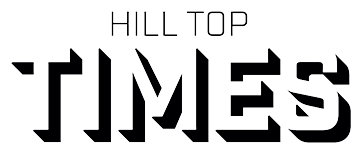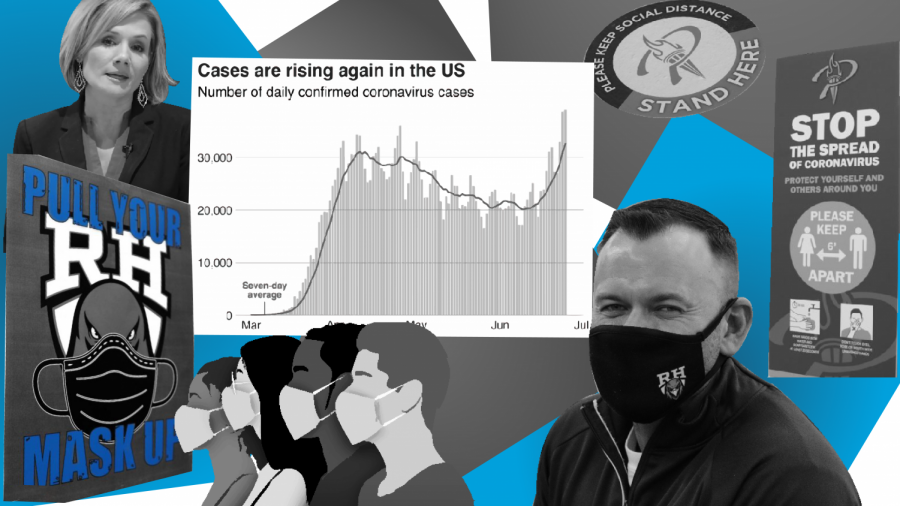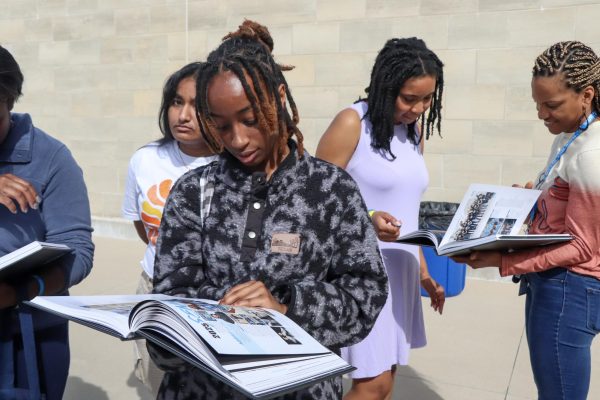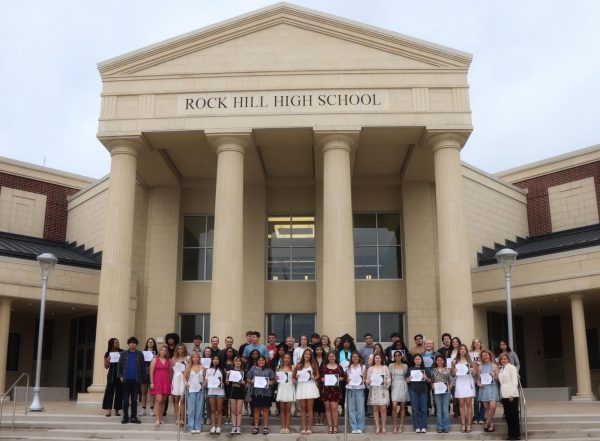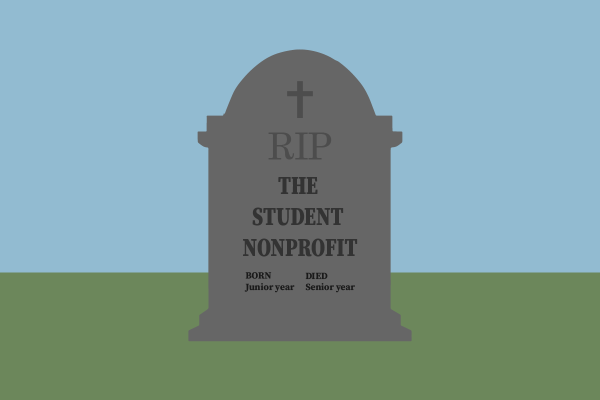Opinion- The school’s COVID-19 policies are getting worse. Here’s how to stop it.
Student columnist reviews corona procedures, gives take on solutions
A graphic depicts RHHS COVID-19 measures, as well as the increasing U.S. case load. While the school has created a number of policies, columnist Wesley Barrett calls for more solutions. “There was a solid system prior to the changes,” Barrett said. “After getting quarantined despite having a negative test, I know personally that it was not fun, but practices of over-caution prevent outbreaks from spiraling out of control.”
Students came back to school after Thanksgiving break to finish out the semester. Judging from the district’s new COVID-19 policies though, there seems to a misconception that the virus still is, or ever was, on break. The school had policies at the beginning of the year that were worth applauding, but revisions have occurred since then.
And not for the better.
Look at the mask policy. It isn’t even a mask policy. It’s a vague “face covering” policy with no clear definition. This means the school asks for the bare minimum from its students, even though that minimum isn’t effective. Face shields, for example, don’t adequately prevent the spread of COVID-19 because the virus can spread beyond the physical barrier. Another example is respirators with breathing valves. The valve gives an easy escape for virus particles to spread, meaning almost no prevention actually occurs. The loose regulation of face coverings undercuts the effectiveness of the masks, making an outbreak more likely. At this point, it may seem pragmatic to posit that students wearing any mask is a victory, and changes to the rules are risky. The fact of the matter, though, is that the effectiveness of new rules like this rely chiefly on enforcement and not student buy-in. After all, a few years ago, when the district banned Nike shorts, there was pushback, but ultimately the rule has become normalized.
One previous boon to the school’s policy was the contact tracing system. Strong contact tracing regimes are cited as the prerequisite for easing social distancing rules. Unfortunately, though, contact tracing here has weakened, not requiring students within six feet of a positive test to quarantine if both parties were wearing a mask. However, CDC guidelines became more strict around the same time.
There was a solid system prior to the changes. After getting quarantined despite having a negative test, I know personally that it was not fun, but over-caution practices prevent outbreaks from spiraling out of control. Some may criticize the old program as overzealous and damaging to education, but claims like this are misguided. It concedes that students who are already online (which accounts for a sizable 30 percent of the population) do not get enough support and show unpreparedness for a worst-case scenario, school-wide closure.
Additionally, it highlights a prioritization of education over the lives of students. Not only is it chilling, but it’s significantly harder to teach students grieving over the loss of a loved one or even a peer. Running students through the gambit of COVID exposure is not a worthwhile risk, especially with a lack of research on its long term effects.
While the school still needs to fix these problems, not every current safety measure should be thrown out. The school nurse has played a big role in administering the school’s policies. That is a profoundly important step towards making safe guidelines. This should be commended. The administration also helped lay a new foundation with one-way stairs and COVID-19 awareness posters. Especially at the beginning of the year, we had a transparent and open relationship about the virus during morning announcements, which acted as both a time to keep students up-to-date and gently encourage proper coronavirus etiquette. The school year started with a firm commitment to student health, and even if the enforcement has faded, it’s not too late to use the resources already in place to be better.
Both district and school leaders should take action. Leadership can appeal to state and local officials for the infrastructure needed for a better response. For example, random COVID-19 testing in Texas specifically could be the path out of this public health emergency. Leaders in district administration can make efforts to revert back to rules that took the teeth out of quarantine by limiting who was contact traced. Even something close to it would be better. As per CDC guidelines, there are laxer options for when transmission is low. There are also certain policies that the school can specifically take. Administration here can increase enforcement of mask policies, starting by getting stricter on the definition of a mask, especially by choosing more effective transparent options than face shields. Finally, the school needs to prepare to quarantine students by increasing the effectiveness of e-learning. The school should form a special advisory council consisting of online students to address existing concerns.
The school has been lucky to not face closure, but Christmas, like Thanksgiving, is posed to increase COVID contractions. If nothing is done in response, the second semester will be no holiday.
Your donation will support the journalists of Hill Top Times and RH Media. Your contribution will help cover travel and registration costs needed for state and national conventions.

Wesley is a senior at Rock Hill High School, and this is his first year in News Paper. He's done debate all 4 years of high school and enjoys competing...

